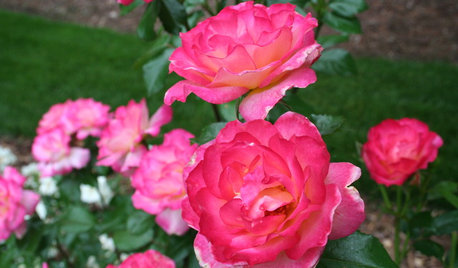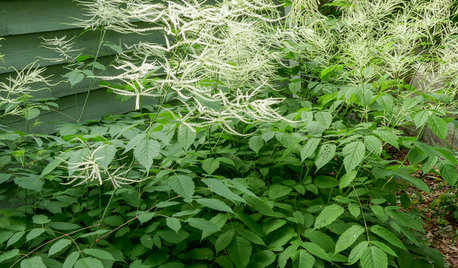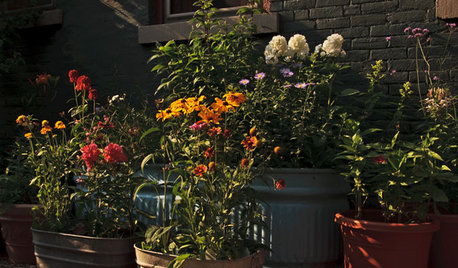japanese beetles they have arrived!!!!
imred
14 years ago
Related Stories

HOMES AROUND THE WORLDHow Japanese Architects Have Built on the Work of Frank Lloyd Wright
The design philosophy of the U.S. architect, who worked for a time in Japan, has been kept alive by generations of Japanese architects
Full Story
DECORATING GUIDESStrange but True Parallels Between Early Western and Old Japanese Style
Part 1 of our 'wabi-sabi' series: in which Shaker and Arts and Crafts designs reveal simplicity, modesty and integrity
Full Story
Design Solution: Japanese Shoji Screens
See How Light-Filled Shojis Create Serene Spaces for Modern Homes
Full Story
MY HOUZZMy Houzz: Japanese Minimalism Blends With Classic New Orleans Style
African art and indoor plants complement the clean and modern aesthetic of two landscape architects
Full Story
GARDENING GUIDESSoutheast Gardener: What to Do in June
Get your snippers out to protect your roses from beetles and harvest lavender from the landscape. It's a glorious month for Southern gardens
Full Story
FLOWERS AND PLANTSAruncus Dioicus Is a Stately Plant for Shady, Moist Garden Spots
Plant goat’s beard in perennial and woodland gardens. Its large white spring blooms attract bees, beetles and butterflies
Full Story
GARDENING GUIDESGreat Lakes Gardener: What to Do In July
Gather juicy berries and breathe in the lovely scent of lilies, but don't forget to stay on top of watering needs and shake off the beetles
Full Story
TILE5 Head-Turning Tile Styles for Backsplashes and More
If plain subway tile would derail your bold decorating vision, these dashing tiles can help you arrive at a brilliant solution
Full Story
GARDENING GUIDESPacific Northwest Gardener: What to Do in September
Put in cool-weather veggies, fertilize your lawn and tidy the garden this month before chilly weather arrives
Full Story
DREAM SPACESStep Inside a Luxurious Pool House and Spa
This Montana pool house takes inspiration from Japanese design and the beauty of its surroundings
Full Story



franktank232
thomis
Related Discussions
Roll call - Have the Japanese Beetles arrived at your house?
Q
We can't swear on GW but...
Q
They have arrived! (Japanese Beetles)
Q
Yesterday's Blooms, and the First Day of Summer
Q
somedudeinthegarden
franktank232
franktank232
Karen Pease
chuck60
imredOriginal Author
nhardy
rayrose
myk1
franktank232
jellyman
franktank232
scotkight
marc5
franktank232
jellyman
californian
djofnelson
franktank232
franktank232
jellyman
franktank232
imredOriginal Author
alexander3_gw
sharppa
djofnelson
justaguy2
franktank232
imredOriginal Author
virraszto
franktank232
alan haigh
erdoc1971
franktank232
erdoc1971
jellyman
rayrose
jellyman
djofnelson
franktank232
erdoc1971
franktank232
chuck60
jellyman
imredOriginal Author
djofnelson
franktank232
franktank232